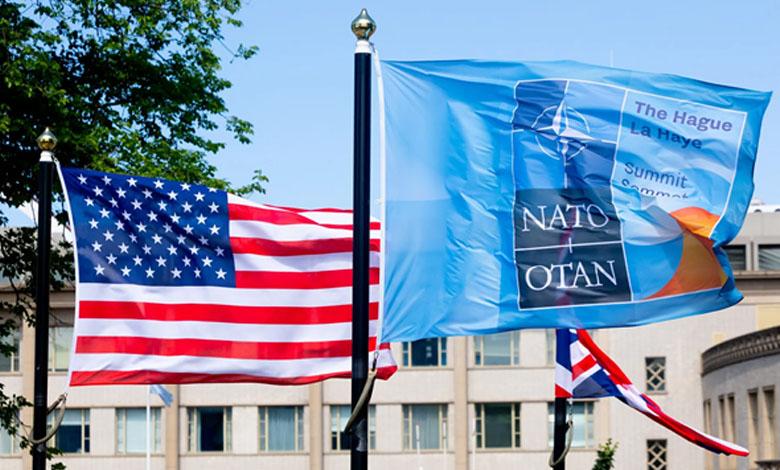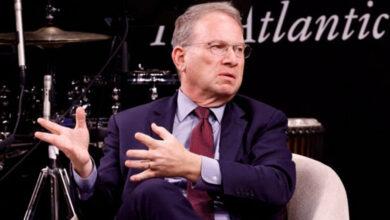A warm bath for Trump: what the NATO summit in The Hague means for Ukraine and the Alliance itself

The two-day NATO summit in The Hague, which was supposed to be a demonstration of unity in the face of global threats, turned into a political show, with Donald Trump at the center, whom everyone was trying to please.
The US president has once again demonstrated his ability to set the tone for Western politics, with an impact that goes far beyond formal protocol. And although his official role at the summit was limited, the effect of his presence alone was dominant.
For Ukraine, this means a shift in priorities, an increase in the role of European allies, and a painful, albeit predictable, marginalization on NATO’s agenda.
Avoidance Summit: Minimal format to minimize risk
Until the last moment, Trump’s participation in the summit remained in question. As a result, it became known that the US president will attend only one day of the summit and take part in a single session. This limited format, which was apparently a compromise on the part of the participating countries, has already caused diplomatic losses: Japan, South Korea and Australia canceled their visits, explaining the decision by not being able to hold the planned meetings due to “Trump’s speculation about his participation in the event”.
As reported US, this year the summit’s final communiqué may be limited to just three paragraphs – a stark contrast to 44 in 2023 and 90 in 2022. The reason is simple: NATO countries seek to narrow the field for conflict with Trump as much as possible, even at the cost of the strategic content of the document. However, according to other sources, there may be an alternative, more extended version of the communique with references to Ukraine – the final decision will depend on the dynamics of the summit and the mood of the American leader.
Flattery as a tactic: the defense budget under Trump
A key compromise on the part of the Alliance was the decision to agree to an increase in defense spending to 5% of GDP, which Trump sought during his first term. As notes The Guardian, this move was made possible by the “diplomatic flexibility” of new NATO Secretary General Mark Rutte, who effectively played on Trump’s ambitions, giving him recognition and status as a winner on the international stage. When the Secretary General asked about his flattery in a message to Trump, Trump brushed it off and said, “It’s a matter of taste, but he’s a good friend.” According to Rutte, Trump deserves “some credit” for forcing allies to spend more on defense, as well as for his stance on Iran.
It is already known that the NATO member states have agreed on a new defense spending target of 5% of GDP.
The goal of this tactic is obvious – to keep the US in the Alliance at least formally, avoiding loud statements about withdrawal or refusal to protect allies. However, the price of such a “warm bath” for Trump is the actual dilution of NATO’s strategic vision and the weakening of trust within the bloc itself.
The main thing at the moment is that the US president is Donald Trump confirmed his commitment to Article 5 at the NATO summit and called the pledge by member states to allocate 5% of GDP to defense “great news”.
Ukraine is in the shadows, but not out of sight
For Ukraine, the summit in The Hague became an unpleasant, but not unexpected, cold shower. As informs The Guardian, despite the desire of many allies to support Kyiv or even open the door to membership, President Zelensky was invited only to a formal dinner and not to a key meeting of leaders. According to Jamie Shea, the former spokesman of NATO, now the main support for Ukraine will move to other structures – in particular, the EU and the contact group of donors (led by Great Britain and Germany).
The New York Times in its materials adds another disturbing touch: the Trump administration and many European leaders do not share a common vision of the threat posed by Russia in the event of Ukraine’s defeat. The former US ambassador to NATO, Kurt Volker, emphasizes that if Ukraine cannot stand up, it will have far-reaching consequences for the entire European security architecture.
The communiqué will likely not contain any mention of the prospect of Ukraine’s membership in NATO, although an alternative option, which is also in the works, could include such wording if Trump is not against it.
On the sidelines, a lot of attention is paid to the meeting between Trump and Zelensky. If it takes place, Ukraine will try to convince the US to allow the supply of weapons with European funds. However, according to information analytical sources, the probability of success is estimated as low. Nevertheless, Ukraine did not remain without results. Several important decisions were announced at the summit:
Support according to the “Danish model”. Information about support to Ukraine according to the so-called “Danish model” (that is, a scheme where the donor country finances direct contracts with the Ukrainian defense industry) has been actively circulating in the public space since the spring of 2024. As a term, it began to take hold precisely after the announcement by Copenhagen in 2024 of the intention to invest in the production of weapons directly in Ukraine (on the terms of cooperation, and not supply from warehouses). In particular, Politico reported that Denmark was the first to start concluding direct contracts with Ukrainian manufacturers. Currently, more and more countries are switching to the practice of direct orders in the Ukrainian defense industry, which allows for more efficient rearmament of the Ukrainian army, stimulation of the economy and development of own production. This approach makes Ukraine not only an object of aid, but a full-fledged player in the security ecosystem of Europe.
“Estonian model” of support: 0.25% of GDP. Rutte at the press conference stated, that NATO supports the idea of increasing the amount of aid to Ukraine to 0.25% of the GDP of each member country. Such a funding model can significantly increase the resources available to Kyiv, regardless of fluctuations in US policy.
EUR 35 billion in aid for 2025. As reported edition Bukvy, European and Canadian allies have already pledged 35 billion euros in military aid to Ukraine, well above the originally announced 20 billion. Importantly, this amount compensates for the potential lack of a US contribution in 2025, which was estimated at $40 billion of the total commitment at the last summit.
According to the preliminary results of the NATO summit, the two countries are ready to produce Ukrainian weapons on their territory: the British military-industrial complex will produce UAVs, all drones will be supplied to Ukraine by the end of the war, they will finance it fully for 3 years, then jointly.
Denmark allocates $80 million for the production of Ukrainian weapons on its territory.
NATO’s four crises: the undercurrents of the summit
The Hague summit is taking place against the background of what Bloomberg named the deepest NATO crisis since its creation. In the article by analyst Gal Brands, “NATO has already avoided collapse. But it has not yet come so close to it”, it talks about four parallel challenges that shape the new reality of the Alliance:
Security crisis – caused by Russia’s aggression and NATO’s inability to respond quickly and effectively.
The preparedness crisis – a decline in military planning and reduction of arsenals after decades of “peace dividends”. They led to the fact that the Alliance became less militarily capable, notes Brands. As an example: until the mid-2010s, German troops trained with brooms instead of guns. NATO formed a “cocoon” of security that allowed countries to disarm, the columnist states.
A crisis of priorities – The US is increasingly focusing on the Indo-Pacific region rather than Europe.
A crisis of confidence – caused by the behavior of Trump, who questioned the very idea of collective security.
Brands summarizes: never before has Europe dealt with an American president who would openly talk about leaving allies defenseless or allowing their occupation.
The historical significance of the summit
The Hague NATO summit of 2025 will go down in history not with loud decisions, but with restraint and caution, which hide deep cracks in the Alliance. The “warm bath for Trump” tactic is an attempt to keep the US at bay, even at the cost of reducing strategic orientation and postponing important decisions.
For Ukraine, the summit was both a signal of the weakening of the American shoulder and a confirmation of the new role of European allies, who are increasingly taking the initiative into their own hands.
Is that enough to make up for the vacuum Washington is leaving? The question is open. But one thing is clear: the future of NATO can no longer be considered guaranteed, and Ukraine is once again on the front line not only of war, but also of a geopolitical rift.
It is already known that Zelensky and Trump held a meeting at the NATO summit, their conversation lasted about 50 minutes. This is the first meeting of the presidents since Ukraine and Russia resumed direct negotiations. The leaders last spoke live before Pope Francis’ funeral in April. According to the Vertikal Telegram channel, which is close to K. Budanov, the results of the meeting are estimated as excellent.
The next NATO summit will be held in Turkey in 2026.





